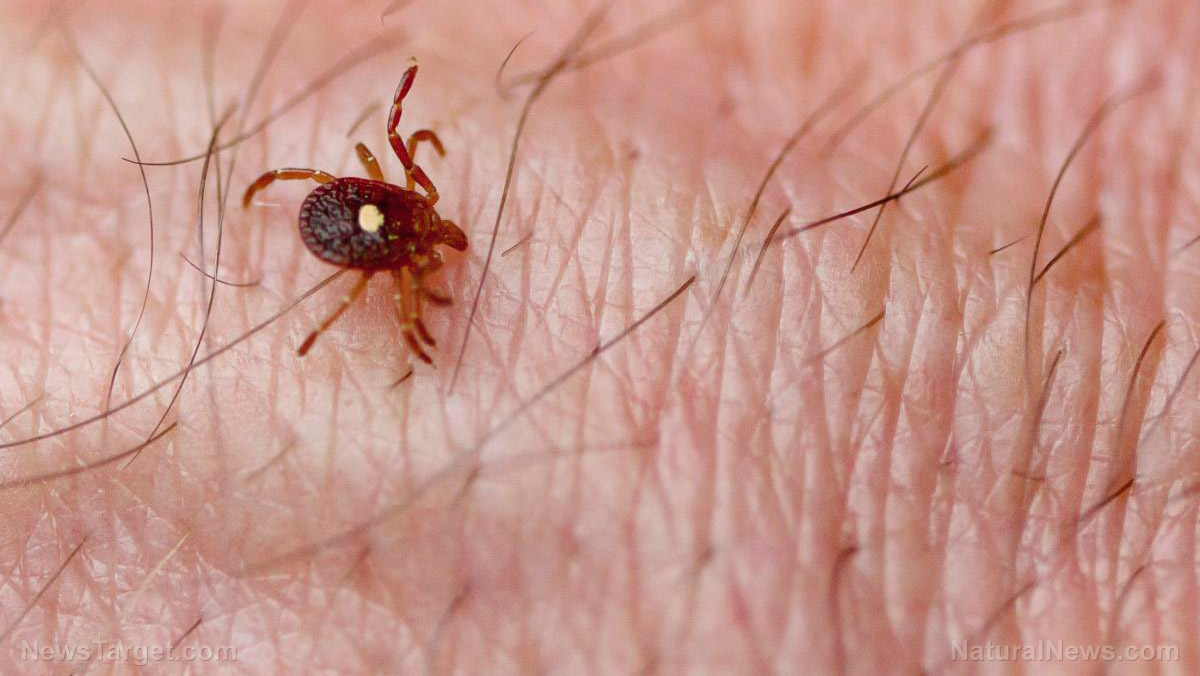These herbs have potent anti-inflammatory properties that may improve symptoms of chronic Lyme disease
04/21/2019 / By Michelle Simmons

Lyme disease is a severe infection caused by the bacteria Borrelia burgdorferi which is carried by ticks. The Centers for Disease Control and Prevention reports that there are nearly 30,000 cases of Lyme disease each year. However, many cases remain undiagnosed and unreported, so the numbers could reach 300,000. People with Lyme disease often suffer from inflammatory conditions, such as arthritis. Fortunately, there are many herbs that help reduce inflammation. Here are some of them:
- Boswellia – Boswellia, also known as Indian frankincense, is an herbal extract obtained from the Boswellia serrata tree. Studies show that this herbal extract can reduce inflammation and can be useful in treating inflammatory-related conditions, such as arthritis. It can also be used to relieve pain and prevent cartilage loss. Animal studies have reported that Boswellia is relatively safe in moderate doses. Boswellia is available as a supplement, cream, resin, or pill.
- Cat’s claw – Also known as Uncaria tomentosa, cat’s claw is a woody vine native to the Amazonian region. It is named ‘cat’s claw’ because of the shape of its thorns which look like the claws of a cat. In traditional medicine, it is used to treat various health problems. Studies show that this herb possesses anti-inflammatory properties which are great for treating arthritis. It also contains compounds called pentacyclic oxindole alkaloid (ALC), which are believed to have an anti-inflammatory effect. ALC can inhibit the production of inflammatory substances like tumor necrosis factor-alpha (TNF-alpha), which helps regulate immune response and promotes fever, inflammation, and programmed cell death in old or damaged cells. Short-term use of cat’s claw appears to be safe.
- Garlic – Allicin, the main compound in garlic, has powerful antimicrobial and anti-inflammatory properties that are good against Lyme disease. A study published in the journal Antibiotics found that essential oil from garlic exhibited strong activity against the bacteria that causes Lyme disease. Additionally, the study suggested that these oils may be useful in reducing the symptoms of Lyme disease. The researchers, who were from Johns Hopkins Bloomberg School of Public Health, said that these essential oils are very promising alternative treatments for persistent Lyme infection.
- Ginger – Ginger is one of the healthiest herbs, and one of its health benefits is it can fight inflammation. Research also shows that the herb can combat infections. Ginger contains gingerol, which is responsible for ginger’s powerful anti-inflammatory and antioxidant effects. Gingerol helps lower the risk of infections and suppresses the growth of various types of bacteria. Ginger is commonly used for cooking and is available in fresh, dried, or powdered form. It can also be used as an oil or juice.
- Stephania – Stephania refers to a group of plants used in traditional Chinese medicine (TCM). Stephania tetrandra, a species native to China and Taiwan, exhibits anti-inflammatory effects. It is best to use Stephania with the help of a TCM practitioner because it also contains harmful compounds.
- Turmeric – Turmeric, a powerful super food commonly used in Asian cuisine, is also used for health enhancement and disease treatment. It contains curcumin, which is responsible for its powerful anti-inflammatory activity. Its ability to stop inflammation makes it an effective remedy for arthritis. The anti-inflammatory, antioxidant, and pain-relieving properties of curcumin may also aid in reducing Lyme disease symptoms.
These herbs may not cure Lyme disease, but they are effective in improving the symptoms of Lyme disease. They are even more effective and safer than antibiotic drugs, which are proven to be useless and toxic for chronic Lyme disease patients.
Learn more about Lyme disease by going to Infections.news.
Sources include:
Submit a correction >>
Tagged Under:
alternative medicine, bacterial infections, Borrelia burgdorferi, clean food, disease treatments, food cures, food is medicine, functional food, herbal medicine, Herbs, infections, infectious diseases, Lyme disease, Lyme infection, medicinal plants, natural cures, natural health, natural medicine, natural treatment, remedies, ticks
This article may contain statements that reflect the opinion of the author
RECENT NEWS & ARTICLES
Infections.News is a fact-based public education website published by Infections News Features, LLC.
All content copyright © 2018 by Infections News Features, LLC.
Contact Us with Tips or Corrections
All trademarks, registered trademarks and servicemarks mentioned on this site are the property of their respective owners.





















